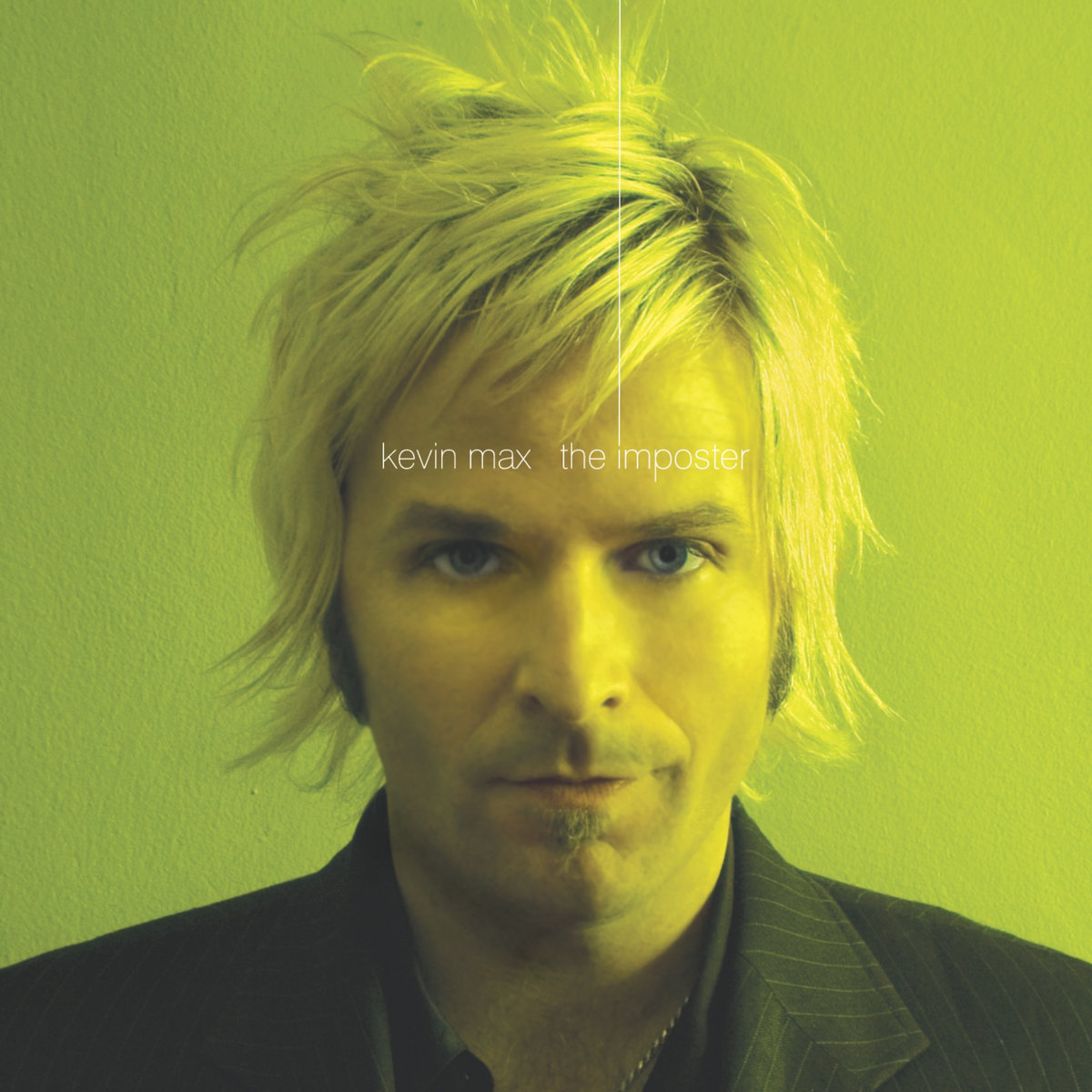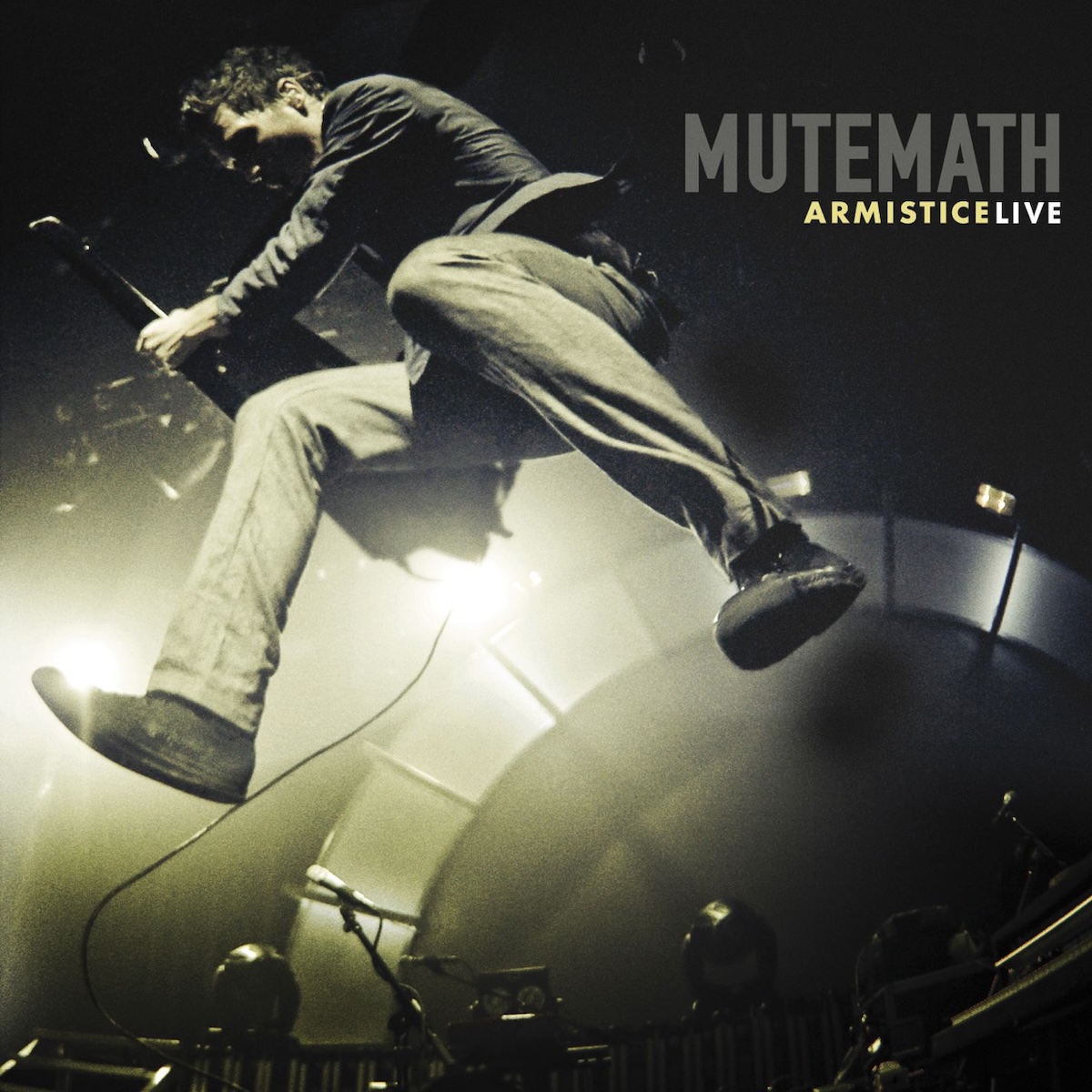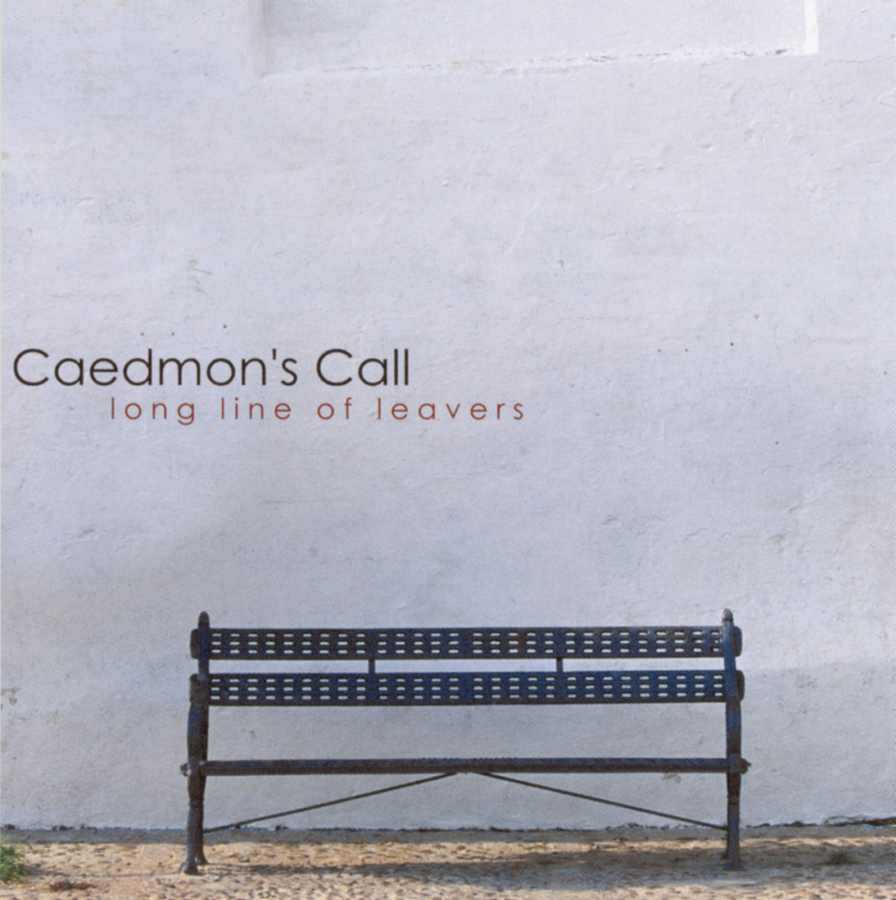Blog
Album Of The Day: Live At The Knight by John Mark McMillan

Released 10 years ago this coming Thursday, this is the first live album by John Mark McMillan, and it's one of my favorite live recordings. Recorded in his hometown of Charlotte, North Carolina after the release of his excellent Borderland album, this features many songs from that album and his previous albums. John Mark McMillan's brand of rock (some might say soft rock) has many layers of instrumentation, and the stage on this recording was filled with many band members making layers of drums, guitars, bass and keys, plus even some horns and strings on a number of songs as well. His wife, Sarah McMillan, sings lead on a few songs from their You Are The Avalanche EP and does a great job. One of my favorite parts is when John Mark sings "Heart Won't Stop" from that EP and mixes in a cover of "Stand By Me" with some pounding guitar from James Duke. John Mark McMillan loves singing about his relationship with God, but he's also a musician making great music and lyrics about real life too, not just making what the church is looking for, and I really like his style. I like that my physical copy has a CD of a 78-minute version, plus a beautifully-filmed DVD of the full 95-minute concert, but you can listen to the whole version on streaming, thankfully. (I wish it was a Blu-Ray not a DVD, but it still sounds excellent and looks pretty good too.)
Release Year: 2015
Listen on Apple Music
Listen on Spotify
Watch on YouTube
Album Of The Day: Bullet by Mat Kearney

Released 21 years ago today, Bullet is the debut album from Mat Kearney, a singer-songwriter who likes to blend genres. I first heard of Mat Kearney a few years before when he spit a verse on a hip-hop mixtape album, so I expected a bit of hip-hop on his debut. This album mixes Coldplay-esque pop with hip-hop and spoken word verses on songs like the title track, "Trainwreck" and "Girl America". On other songs, it's just Kearney crooning with an acoustic guitar and a few other instruments, singing beautiful love songs about life, and songs like "Call Me" and "Won't Back Down" show a musician that has lots of promise from the start and continues to write great music over 20 years later. 18 months after this album's release, he released Nothing Left To Lose on Columbia Records, which takes 6 songs from this album and adds 7 new ones, and that is now widely considered Kearney's debut album, as Bullet is not available on streaming and is mostly forgotten. So you might have to find a CD copy of this to give this album a listen.
Release Year: 2004
Album Of The Day: Live At Gruene Hall by Sixpence None The Richer

Sixpence None The Richer has been recording and performing for over 30 years (with some breaks in the past decade or two). Recorded a year ago today in their hometown of New Braunfels, Texas and released earlier this year, this is their first-ever live album. You might know them for their smash pop hit "Kiss Me", but they really are a rock/alternative band that has an excellent sound. This album shows that even 30+ years later, the band has staying power, performing both brand new songs as well as songs first recorded 30+ years ago. They also include covers of songs by Crowded House, Joni Mitchell, The La's and The Choir on this album, along with their many original songs. It's an excellent album that captures the band in the live setting and although the songs don't always sound exactly the same as the studio versions, they still sound great. Even if you think you only liked their old or new stuff, there's a good chance you will like this album.
Release Year: 2025
Listen on Apple Music
Listen on Spotify
Buy on Bandcamp
Album Of The Day: Inseparable by Phil Keaggy

Released on this day 25 years ago was Phil Keaggy's most epic and maybe most experimental vocal albums, and as one of the first Phil Keaggy albums I owned, Inseparable also holds a special place in my heart. Phil recorded almost all of this 16-song album in his home studio and he played pretty much everything on this recording himself, which I'm sure was a huge undertaking. This album has more electronic programming and unique percussion and drum sounds than you would certainly expect for the guitar virtuoso. Electric and acoustic guitar are definitely present throughout, but there are no freewheelin' jam sessions here, just the instrument being used well to serve each song. Songs like "Chalice" and "Litany Of The Spirit" seem to be Phil reconnecting with his Roman Catholic roots a bit lyrically, as well as "Blessed Are" being the Beatitudes put to music. And right in the midst of this spiritual lyrics is a Paul McCartney cover, "Motor Of Love". Phil's got some instrumental songs here, too, mixed throughout the songs. And after a few instrumental tracks, it ends with "Little Star", encouraging the listener to live in God's love. Throughout this album, Phil Keaggy is preaching the Gospel, but it's an experimental rock masterpiece that is really well put-together and I love it. It was also available in an independently-released 2-CD version, which can now be bought digitally online (see links below).
Release Year: 2000
Listen on Apple Music
Listen on Spotify
Buy the independent digital deluxe version on Bandcamp
Album Of The Day: Worktapes: More Songs Of Rich Mullins by Various Artists

If you've been reading these posts for a while, you know I'm a fan of Rich Mullins. He was a songwriter who filled his songs with honesty, the love of God, and so much more. In 2023, Worktapes was released with 14 (15 on CD) covers of Rich Mullins songs by independent artists and 1 Rich Mullins live recording. The songs are mostly just vocals and an acoustic guitar or piano, so they are very different from Rich's heavily-produced, '80s/'90s pop/rock albums. But his songwriting and the respect and passion of the performers for his songs are very palpable. It's a great set of simple recordings honoring a humble man and his songs. You probably won't recognize many of these artists unless you're very familiar with lots of independent Christian artists, but these songs from Jess Ray, Andrew Greer, Josh Wilson, John Tibbs, Candace Coker and many more are worth a listen.
And if you would like to hear more Rich Mullins covers from some more great artists, I highly recommend you head over to Kickstarter NOW and support the "Back To Bellsburg" crowd-funding campaign. The folks at Old Bear Records can't make a new album of Rich Mullins covers happen without our help, and I've already given what I can afford. You can throw in some money and get a download or get a CD and/or vinyl copy to go with that download. If they don't get enough support in these final hours, the album will not be fully funded and will not be able to be finished. Please, join me in supporting this celebration of Rich Mullins's songs.
Release Year: 2023
Listen on Apple Music
Listen on Spotify
Buy the album
Album Of The Day: The Imposter by Kevin Max

Released 20 years ago last week, this is the second album from Kevin Max, the man who had all the best vocal parts in dc Talk. While his first solo album was a very experimental pop/rock/world music sound, this album is definitely more straightforward rock. "Jumpstart Your Electric Heart!" is a fun song that gets the listener jammin' and there are definitely a bunch of slower rock ballads as well that benefit from Max's great voice and soaring falsetto. One of my favorites is his cover of Bob Dylan's "When He Returns", which has excellent vocals from Kevin Max and great piano from Producer Andrew Prickett. Lyrically, the original poetry is thick with with language of love and religion, but it's hard to tell if it's about God or a lover and it definitely is not your standard Christian rock lyrics. This is one of Kevin's better overall albums of his solo career, but if you like the obscure and somewhat odd music, keep digging into his later albums.
Release Year: 2005
Listen on Apple Music
Listen on Spotify
Buy on Bandcamp
Album Of The Day: Armistice Live by Mutemath

"We all break the same." In the fall of 2009, Mutemath released their second album and went on this huge tour. I remember that show at First Avenue as it was an excellent night of music and energy. Thankfully, the band had cameras recording when they performed the show at The Tabernacle in Atlanta, GA. Released 15 years ago yesterday, this live audio was released digitally, and it was also released on CD/DVD combo. The concert film captures the frenetic energy of the band, with lead singer and keyboardist Paul Meany jumping off his Rhodes piano, drummer Darren King constantly pounding on drums faster than you would think any man could, and multiple times where the whole band is banging on various drums in a percussion jam session. Watching the video, you get the idea that these musicians are so talented, they could all just switch places and it would sound just as good. The band Mutemath sounds so great on their albums, it's hard to believe they can recreate that all live, but they show it here on this video. These days, the video quality looks a bit dated thanks to HD video quality, but it's pretty darn good for that era and it was so much fun to watch again. Even if you don't have the DVD, enjoy the live audio of this. Or I think you can find most of the songs from the concert film sliced up on YouTube.
Release Year: 2010
Listen on Apple Music
Listen on Spotify
Watch on YouTube
Album Of The Day: Museum by Citizens

Released two days ago, this is the seventh album from Citizens, a Christian alternative rock band from Seattle. The album title Museum is often styled as "m us eum", I think to highlight the "us" inside the word, but I might be wrong. Lyrically, the band mixes songs of praise and worship to God with some stories of life experience thrown in as well. Their music definitely has a good amount of keyboards and other programming and lots of energy. Unlike some of their older albums, there's no re-imagining of classic hymns as rock songs, but the same style is here. I really only started following this band earlier this year after seeing them live, but they seem like one I have to listen to more, and this new album seems like a good addition to their catalog of songs.
Release Year: 2025
Listen on Apple Music
Listen on Spotify
Album Of The Day: Ace by Madison Cunningham

Released yesterday, this is the fourth solo album by Madison Cunningham, a Southern California-based singer/songwriter. Her energetic songs have lush instrumentation and a jazz-y indie pop vibe. Ms. Cunningham has very beautiful lyrics with lots of honesty and poetry to them, this album involving love and relationships, especially breakups and other tumultuous life events. Unlike her last few albums, the electric guitar is a bit less of the focus after her vocals, but that's not necessarily a bad thing. The piano and the beautiful full-band, jazz arrangements fill the role that the guitar was occupying nicely. Madison Cunningham's music is a bit different from what I normally listen to, but I like her style and it's very interesting, raw production to listen to.
Release Year: 2025
Listen on Apple Music
Listen on Spotify
Album Of The Day: Long Line Of Leavers by Caedmon's Call

Released on this day 25 years ago, this is the fourth studio album from Caedmon's Call and one of their best albums. This folk-rock band was gaining popularity in the mid-to-late '90s. By the time this album was released, they were one of the biggest bands in Christian music and also had some cred in the college rock scene too. As was their formula, the seven-member band mixed songwriters, lead vocals, and more between songs to keep each song sounding fresh. Everyone pitched in on music and percussion, giving each song a full band sound even live. "Prepare Ye The Way" brought an old '70s song from John Michael Talbot to a new generation. Other favorites are "Dance", "Love Is Different", "The Only One" and "Piece Of Glass". Finally "Ballad Of San Francisco" is a fun, rollickin' closer to a quality album from a band in their prime.
Release Year: 2000
Listen on Apple Music
Listen on Spotify
